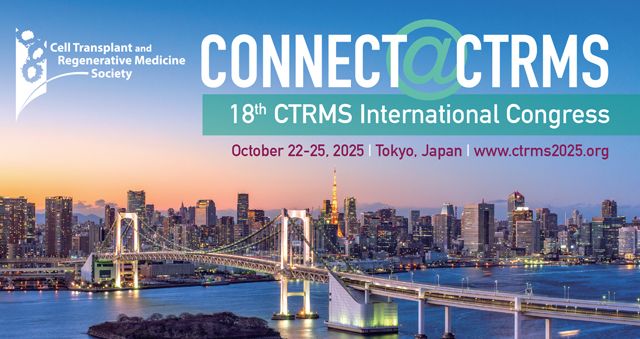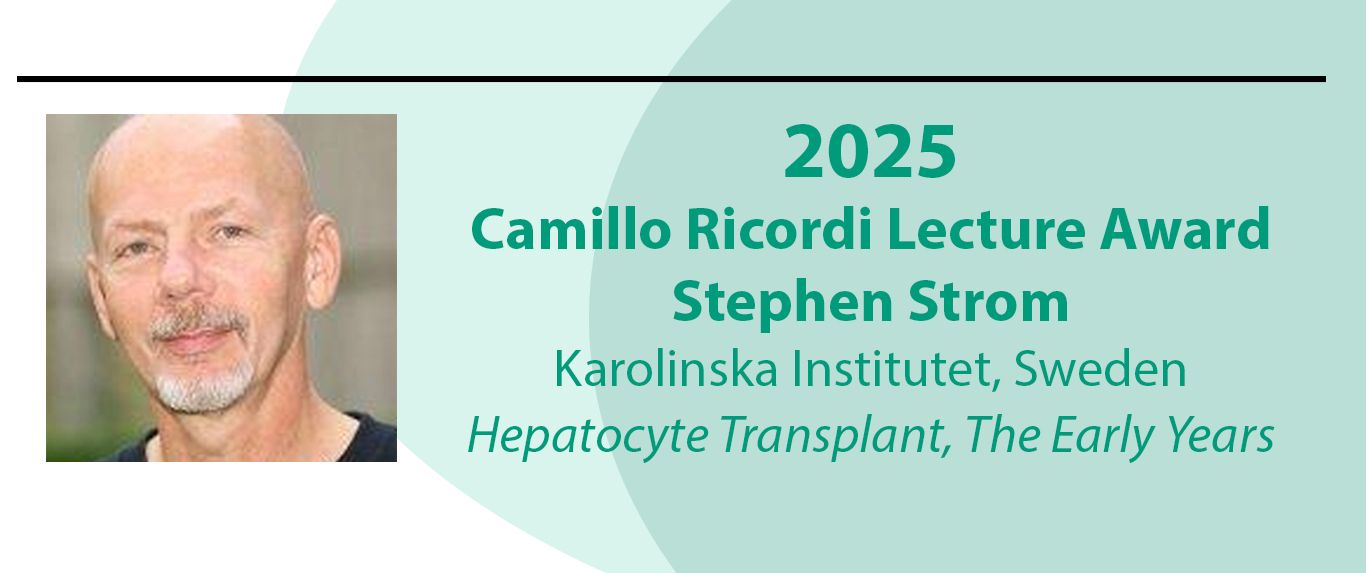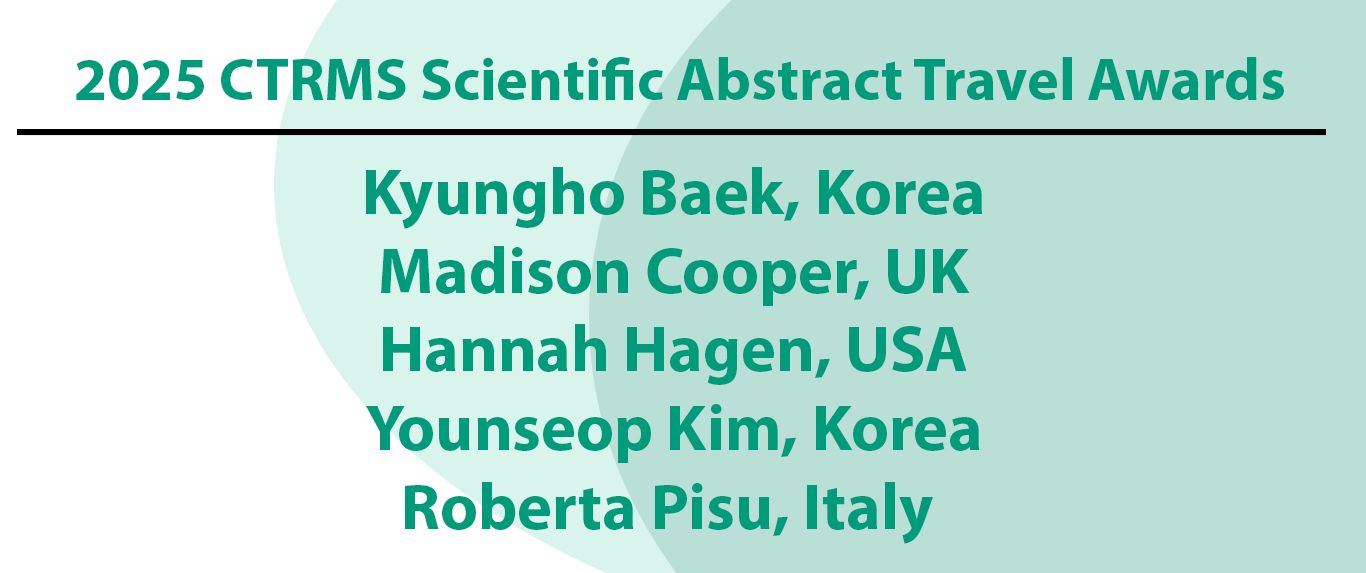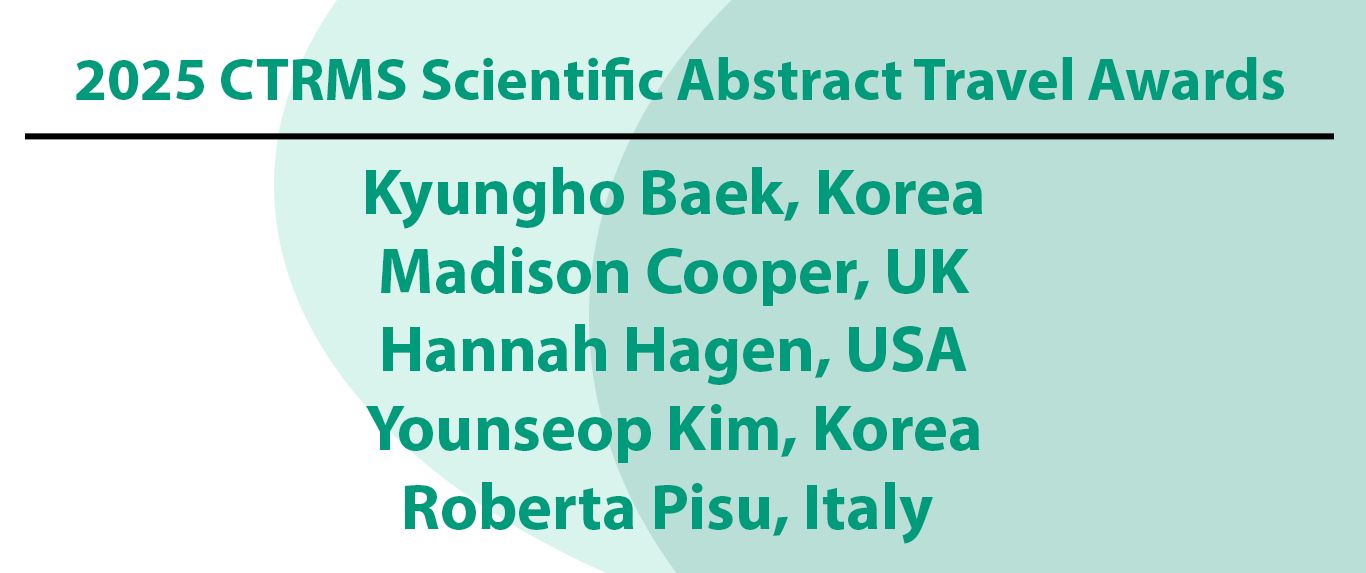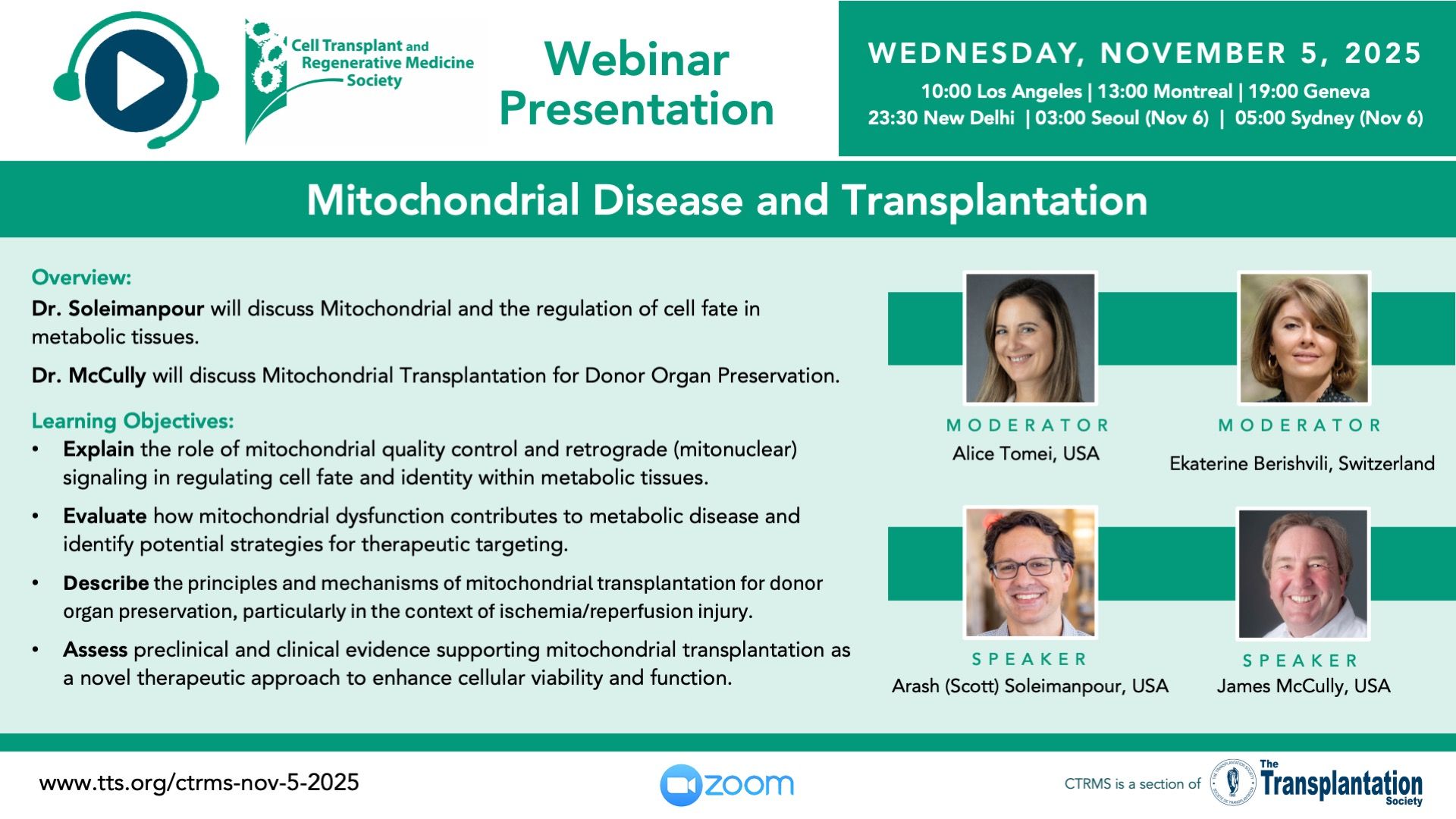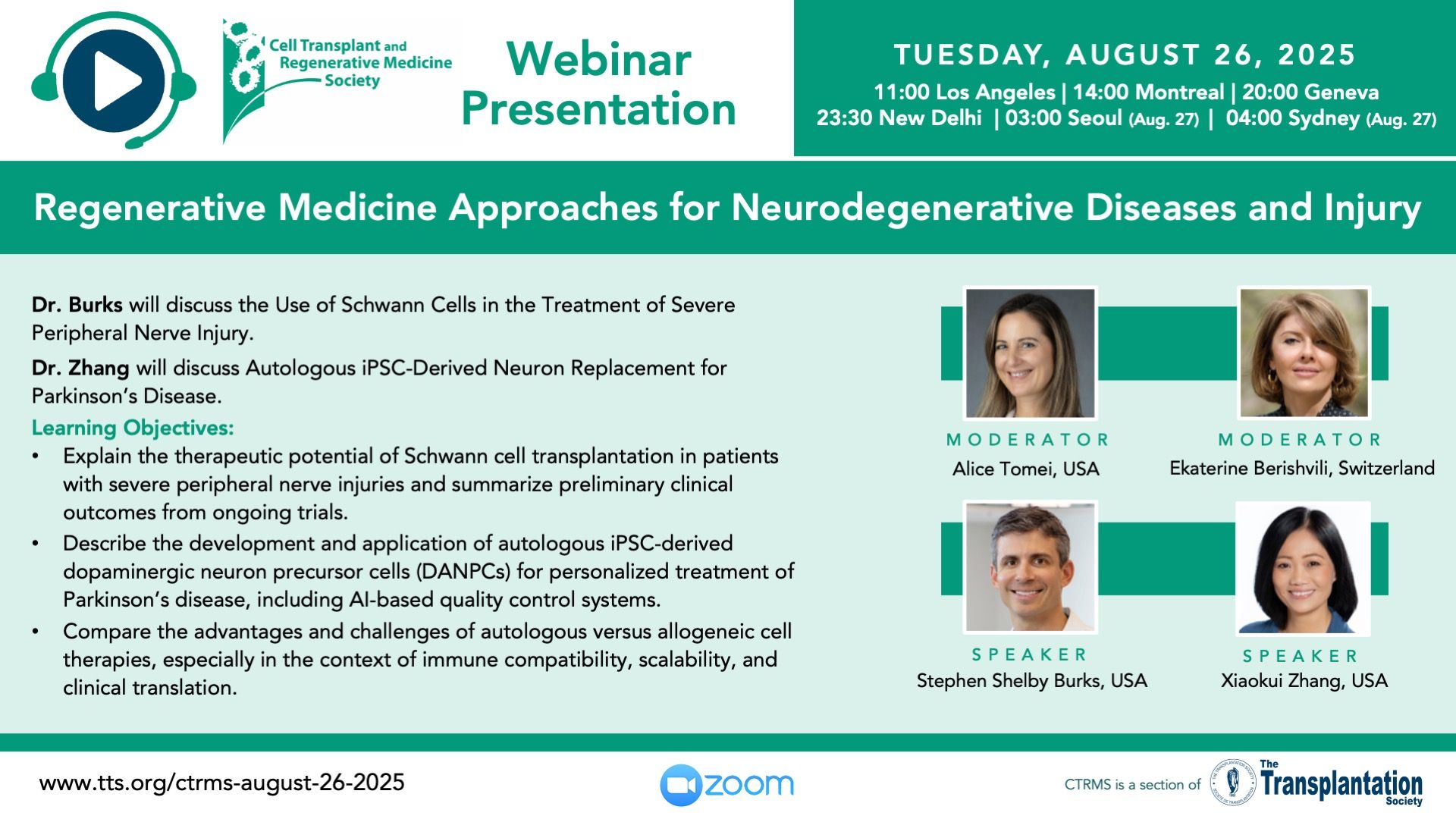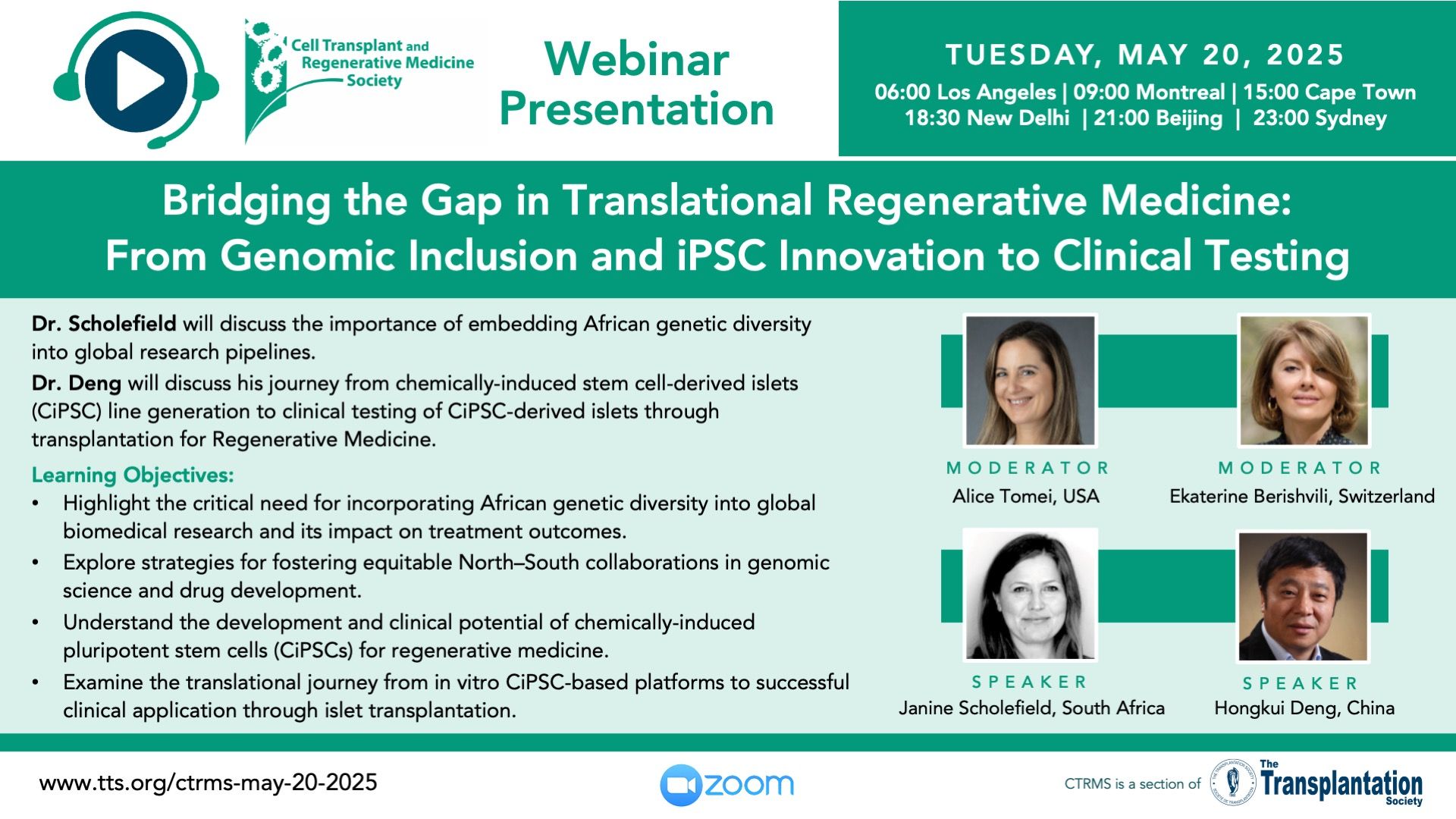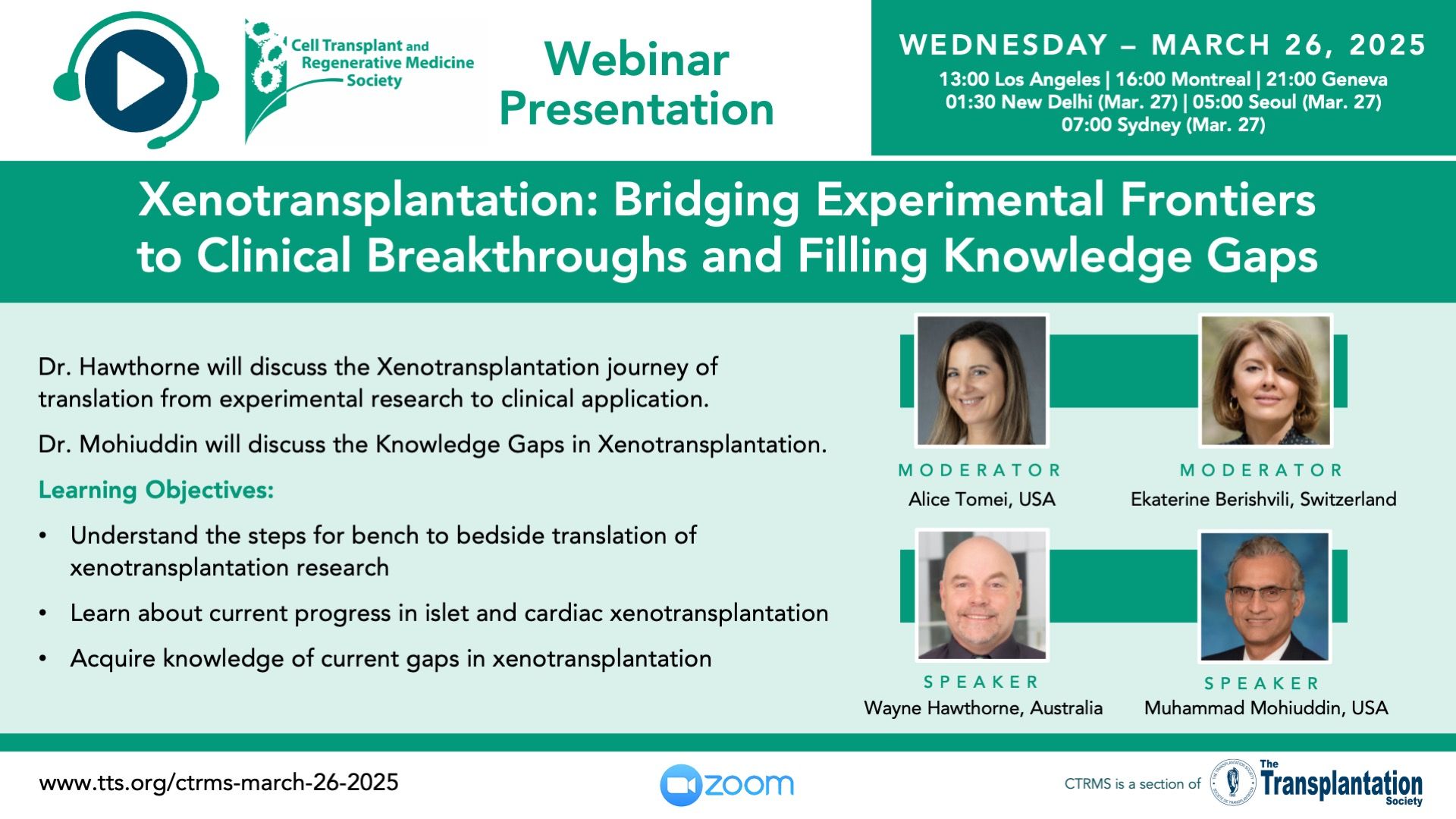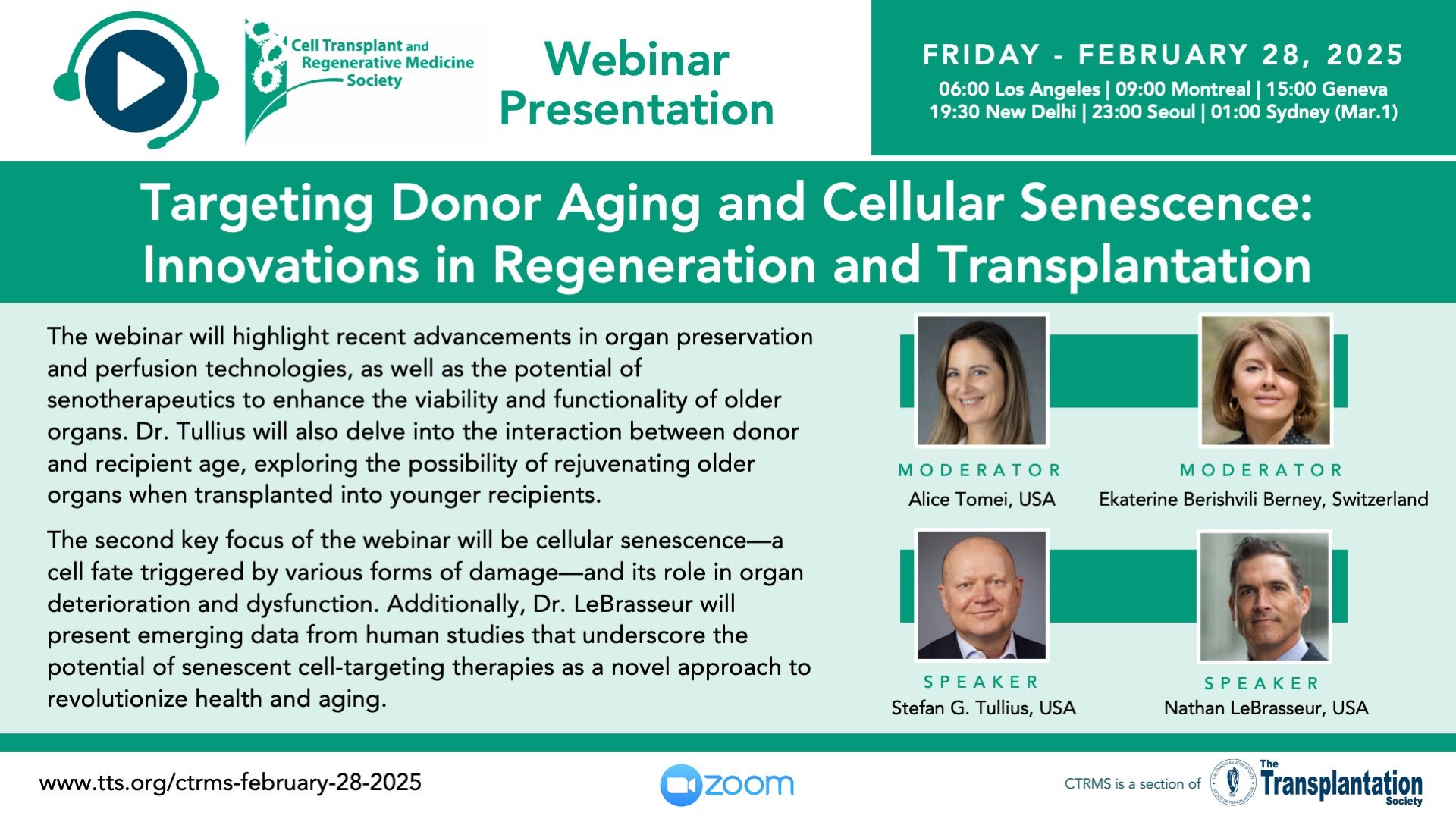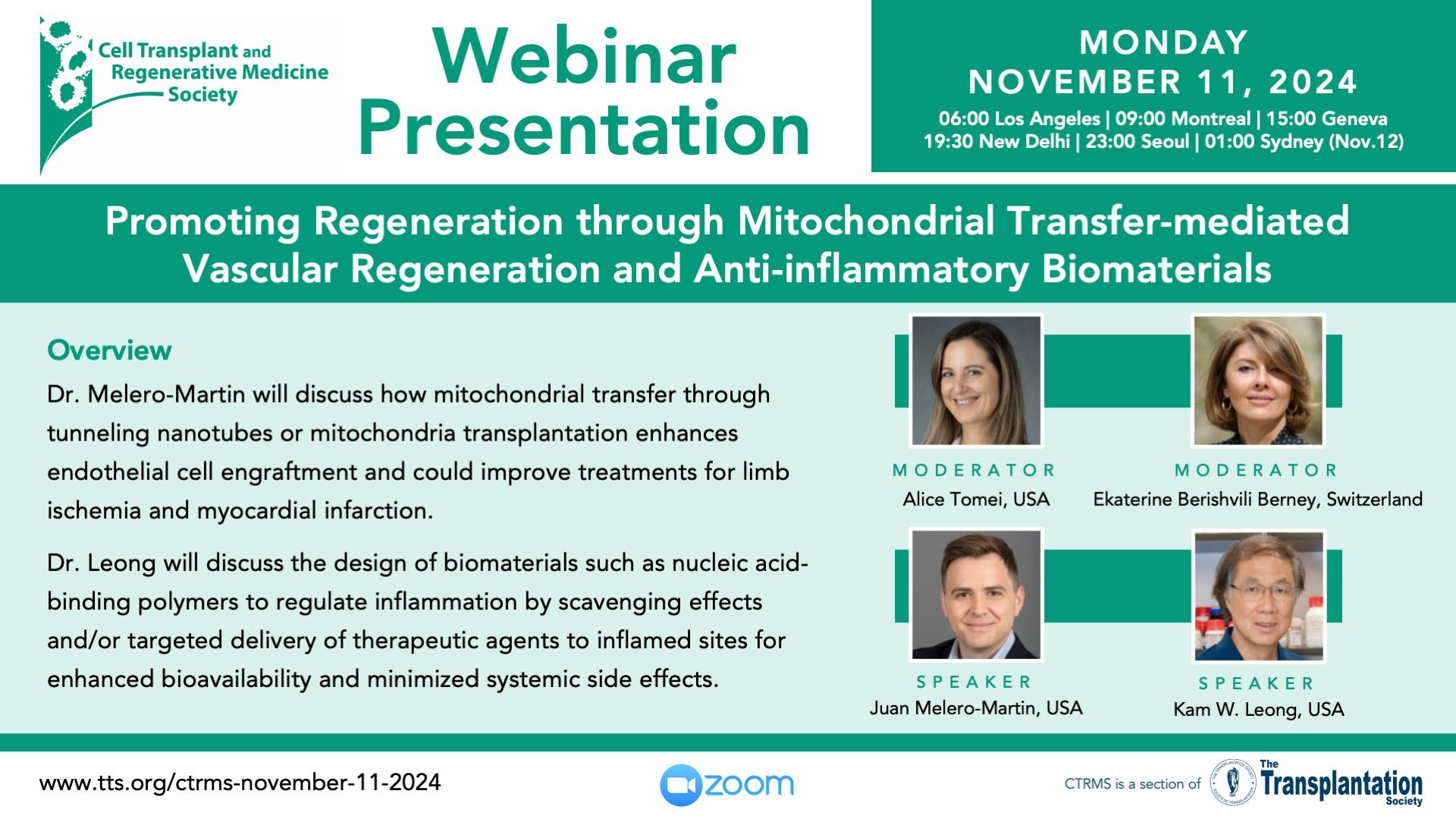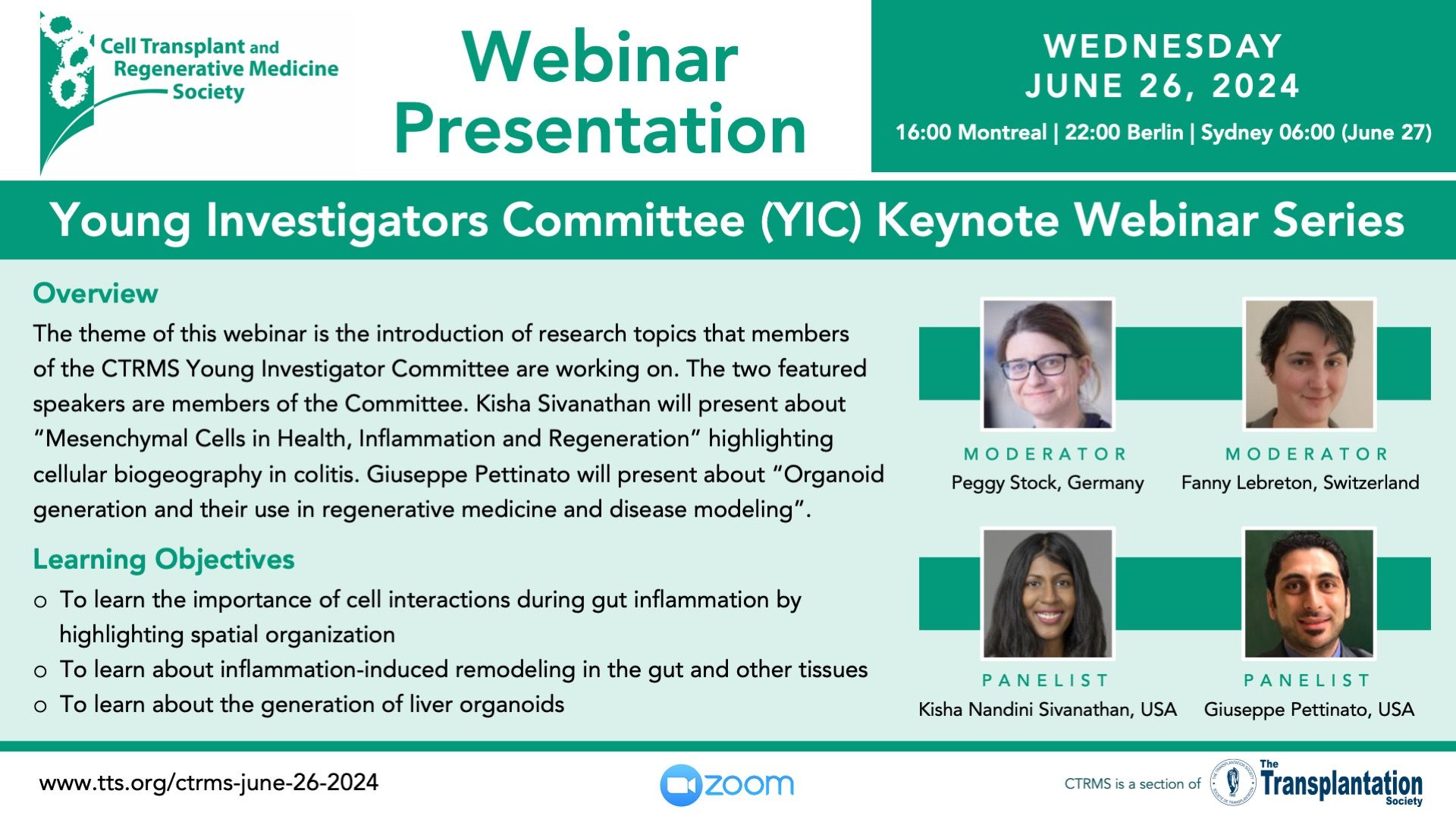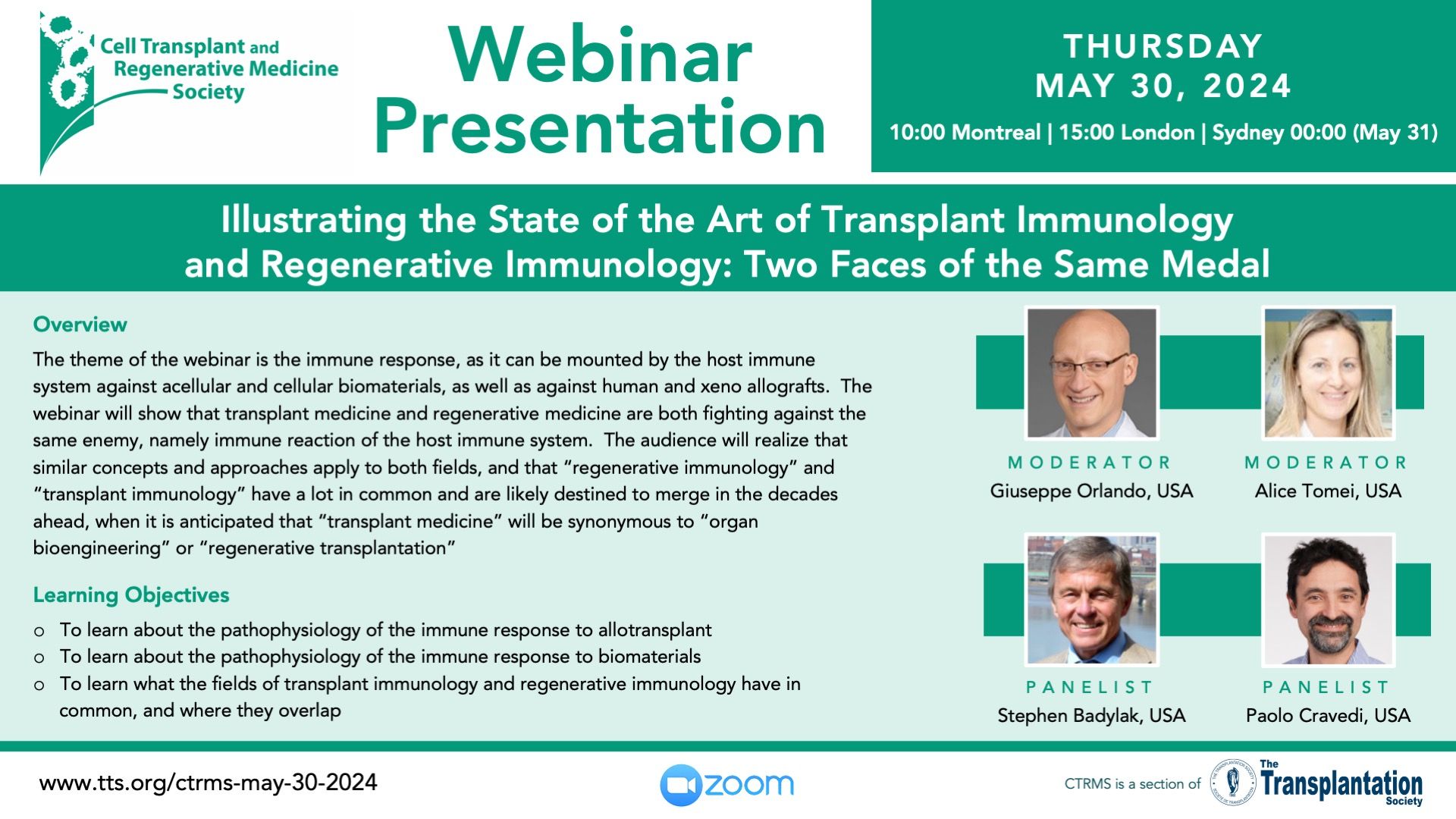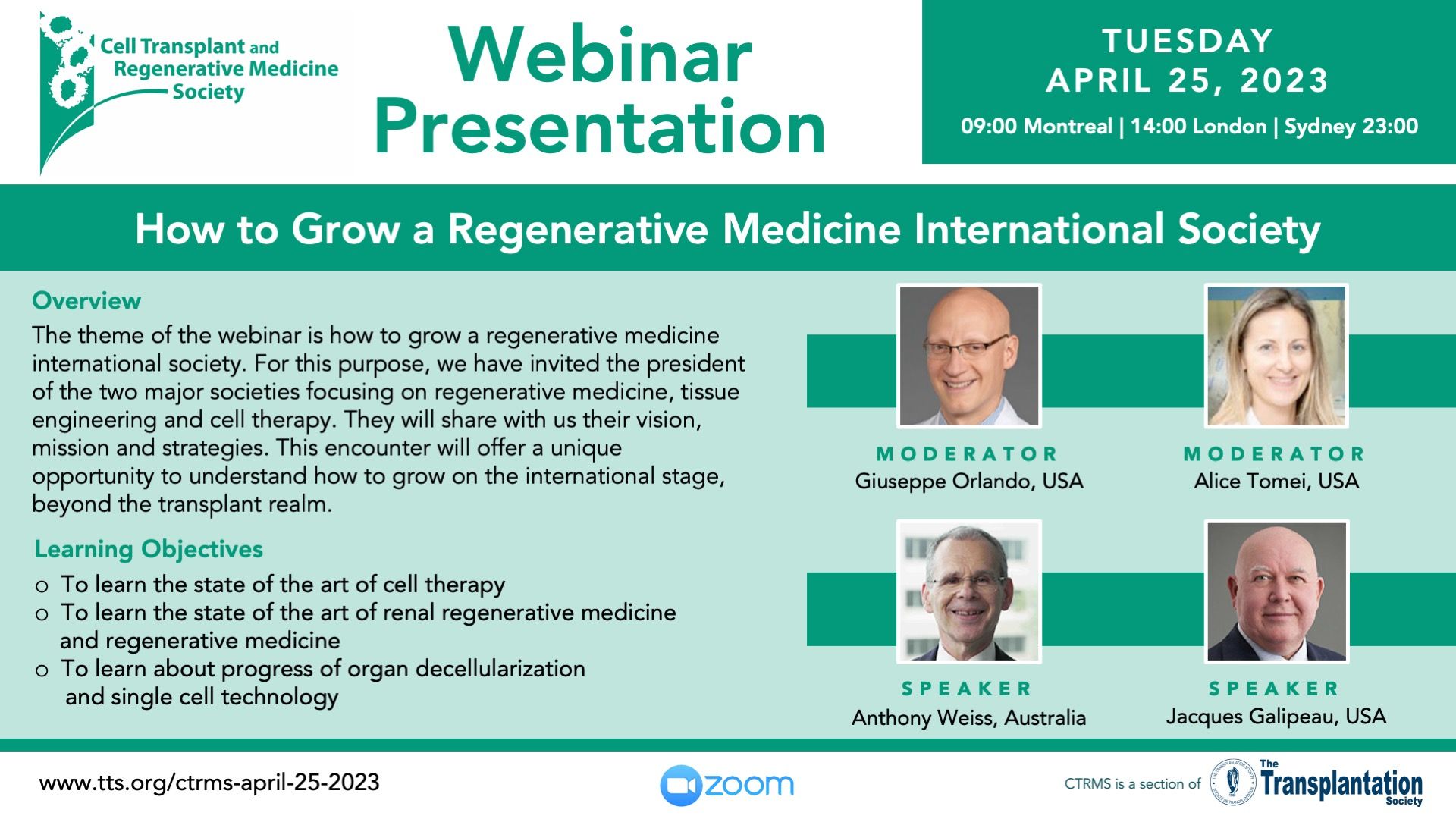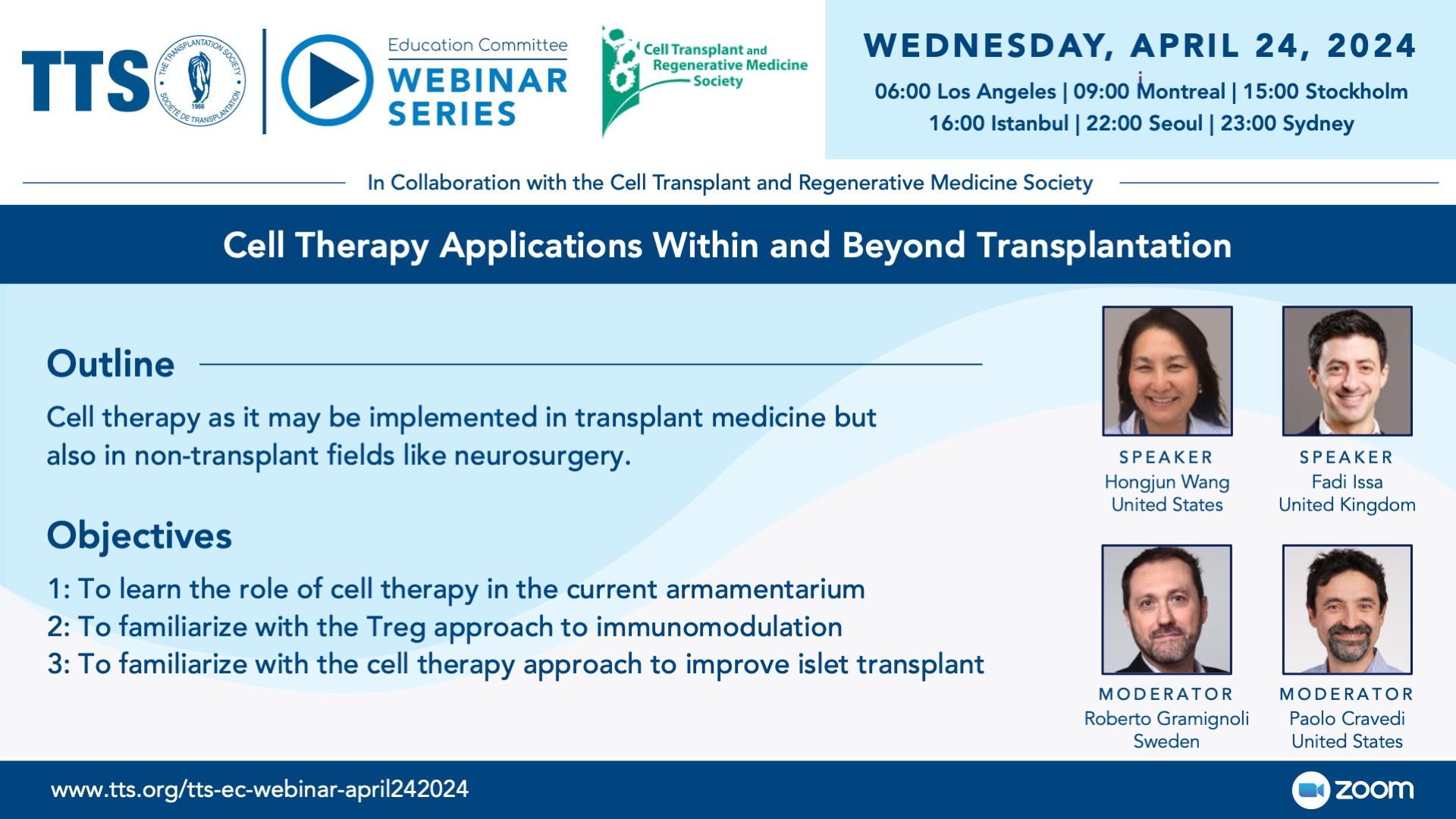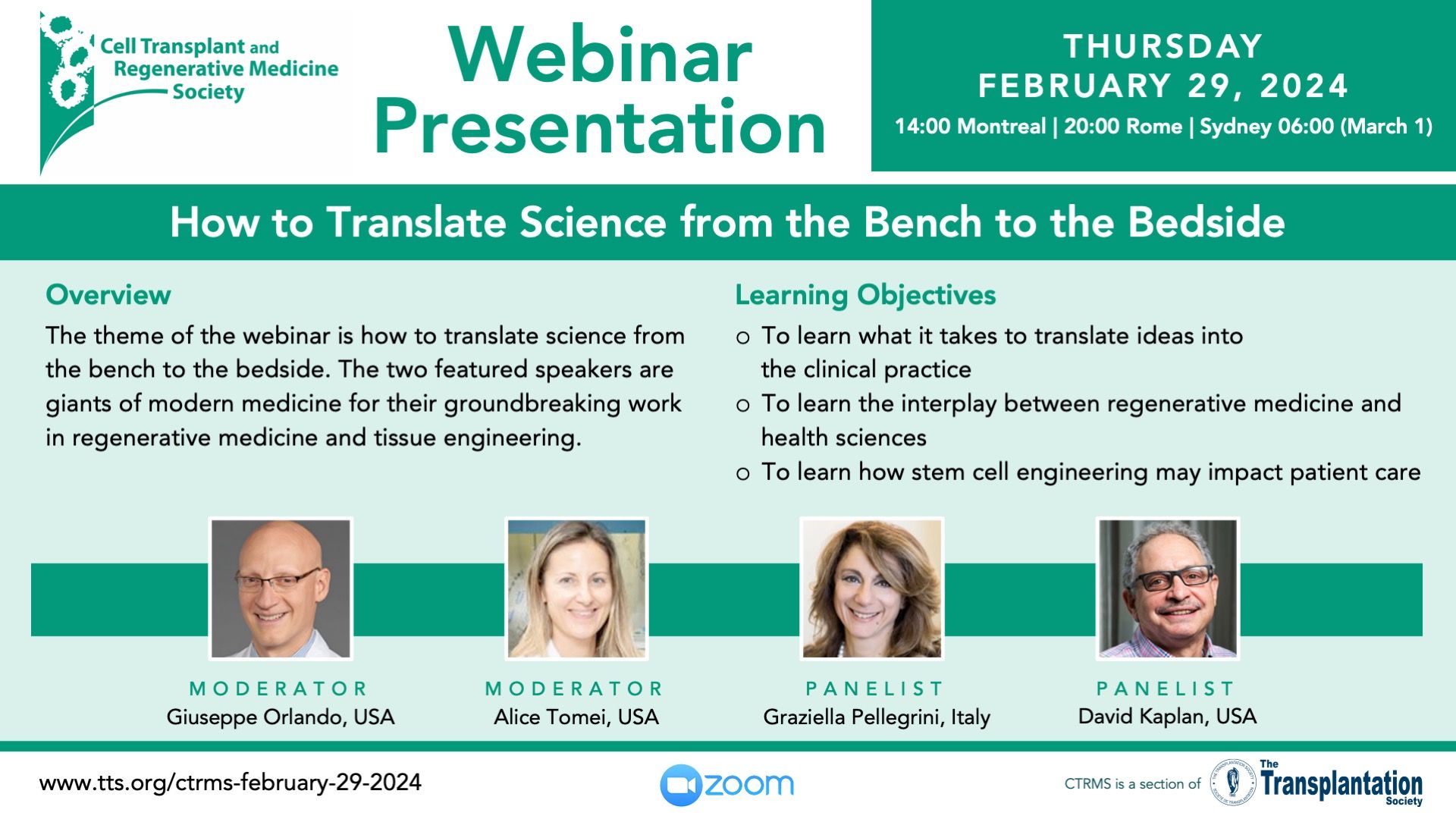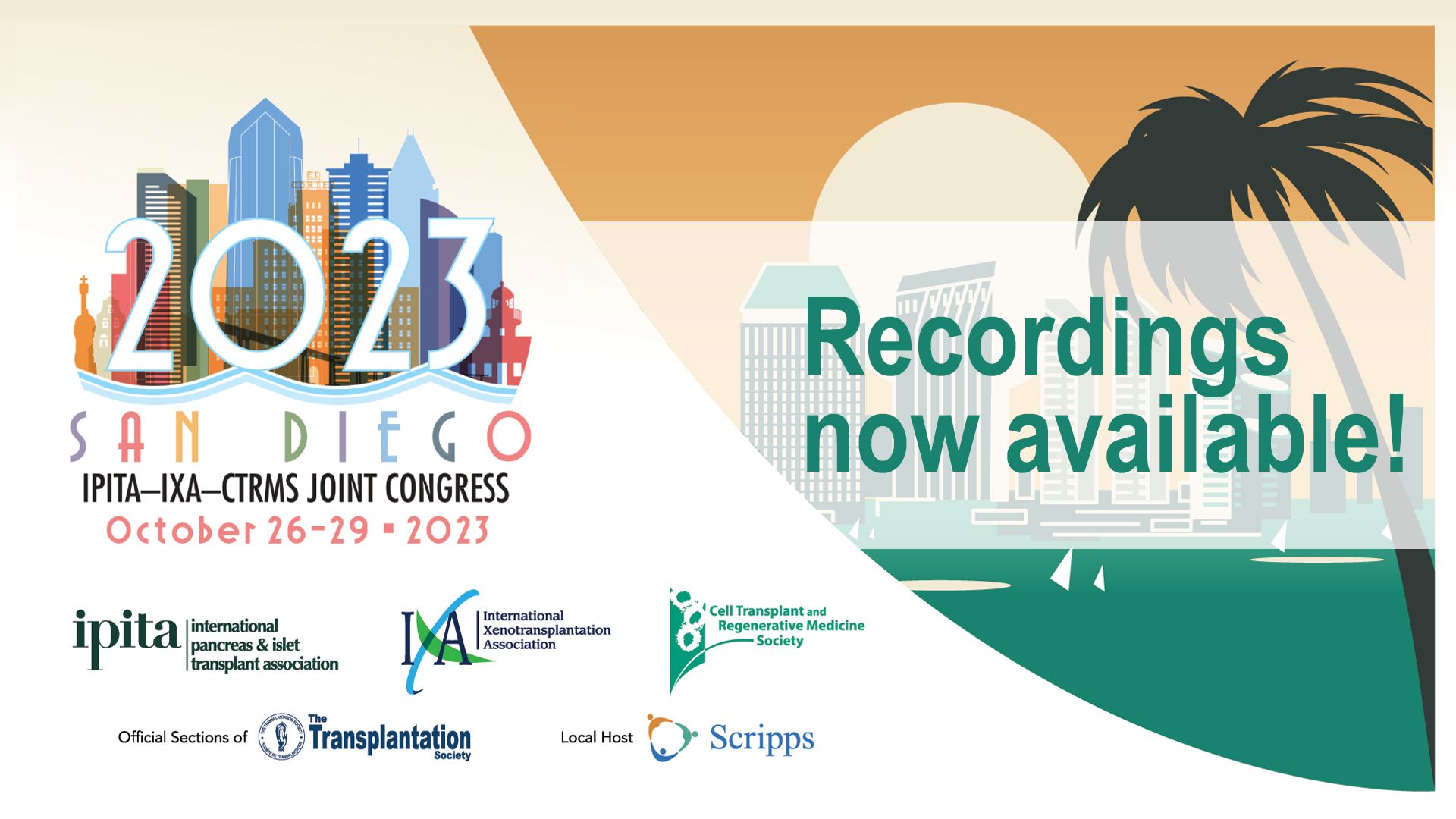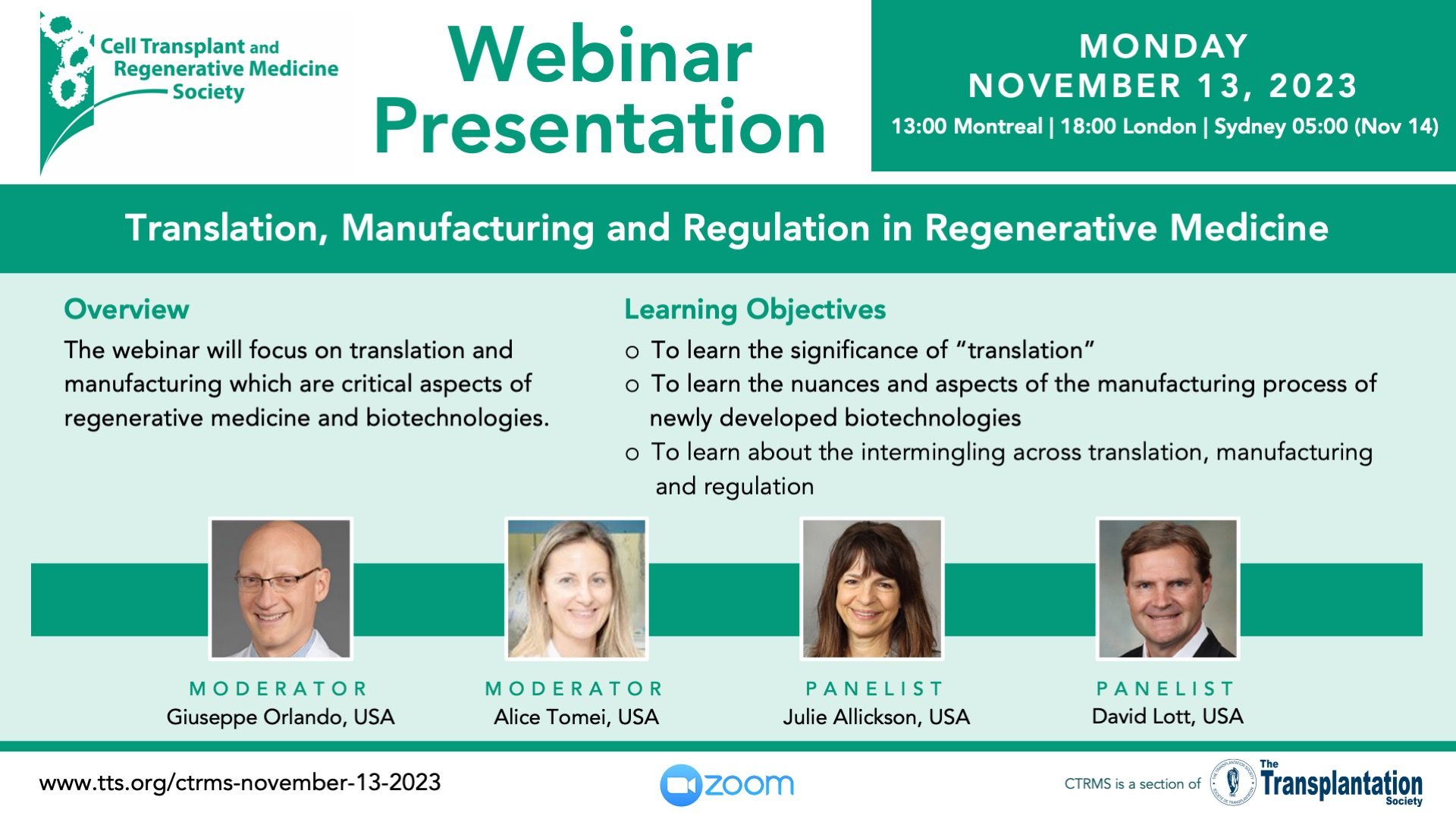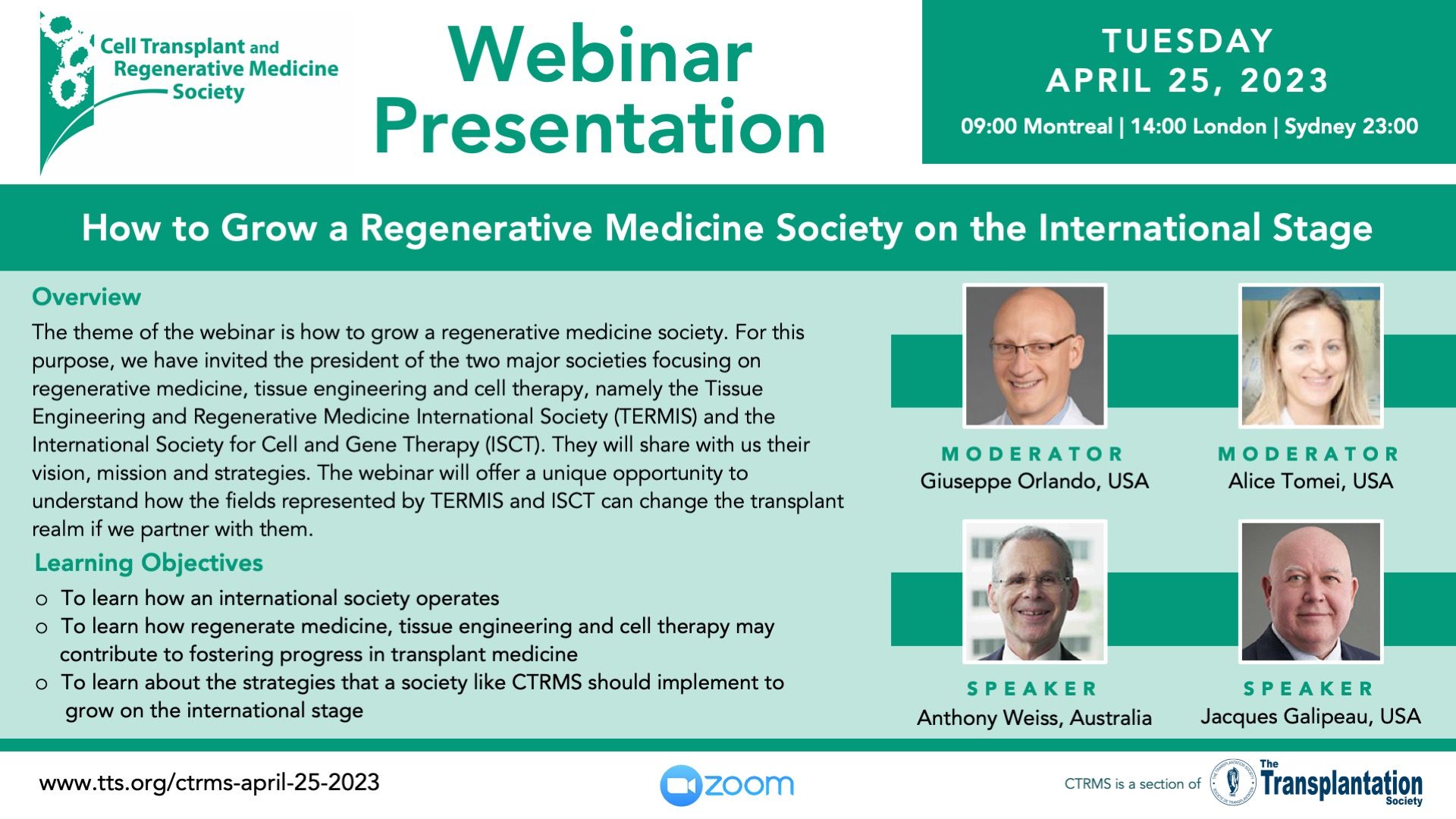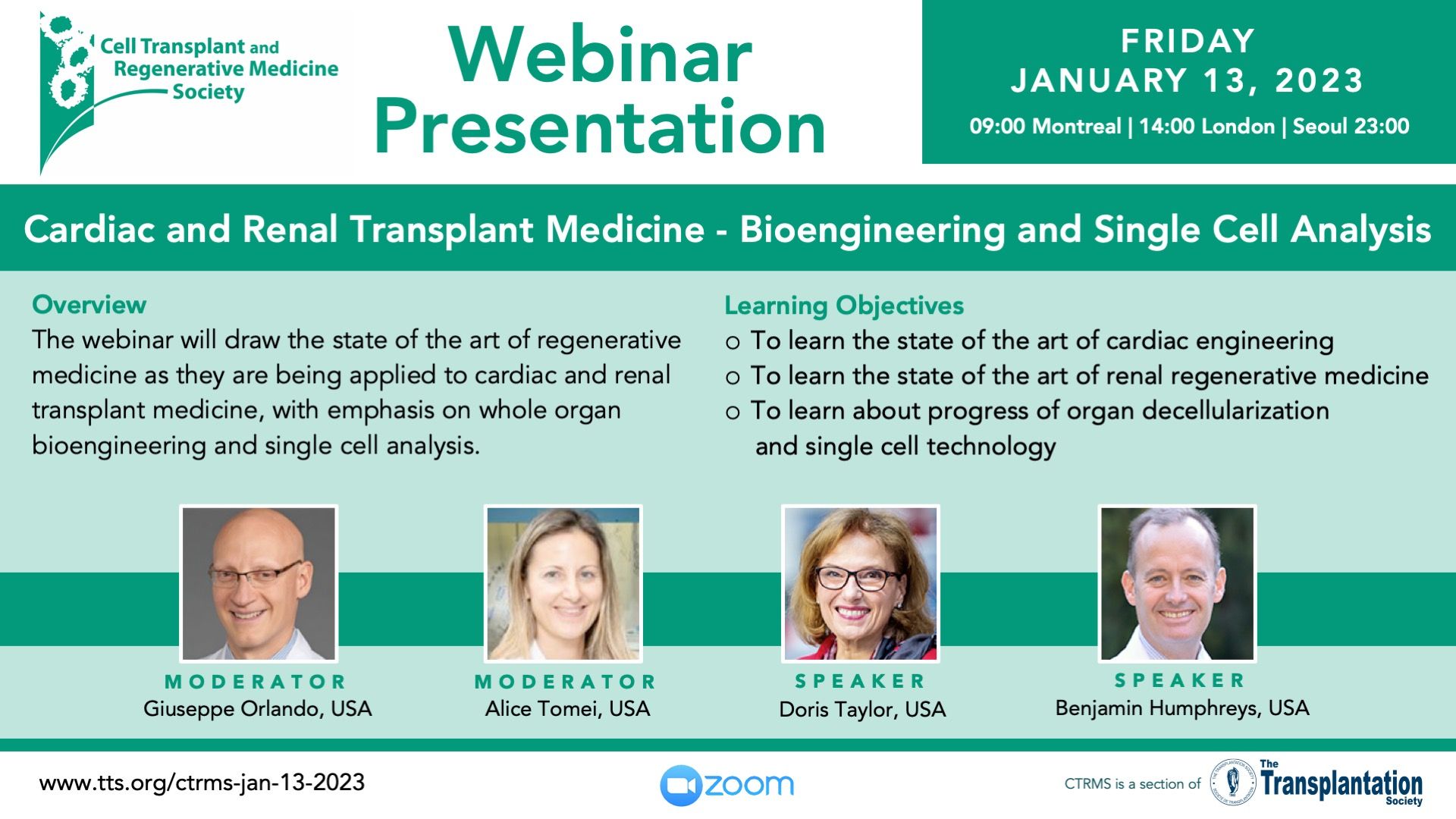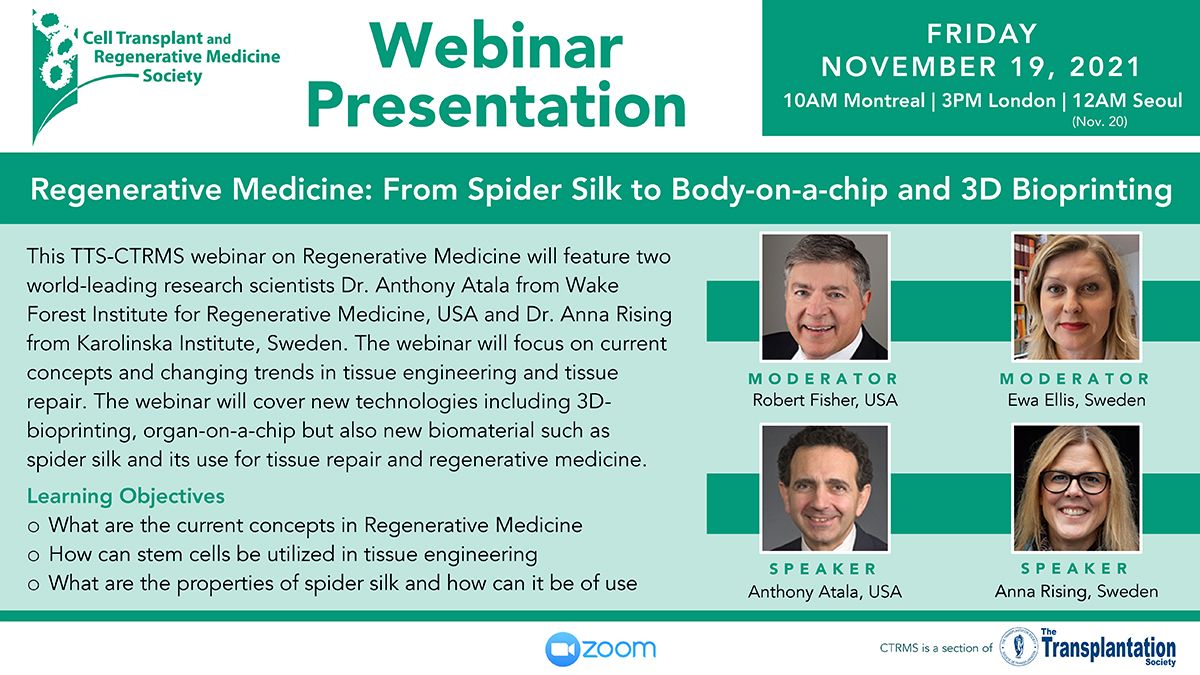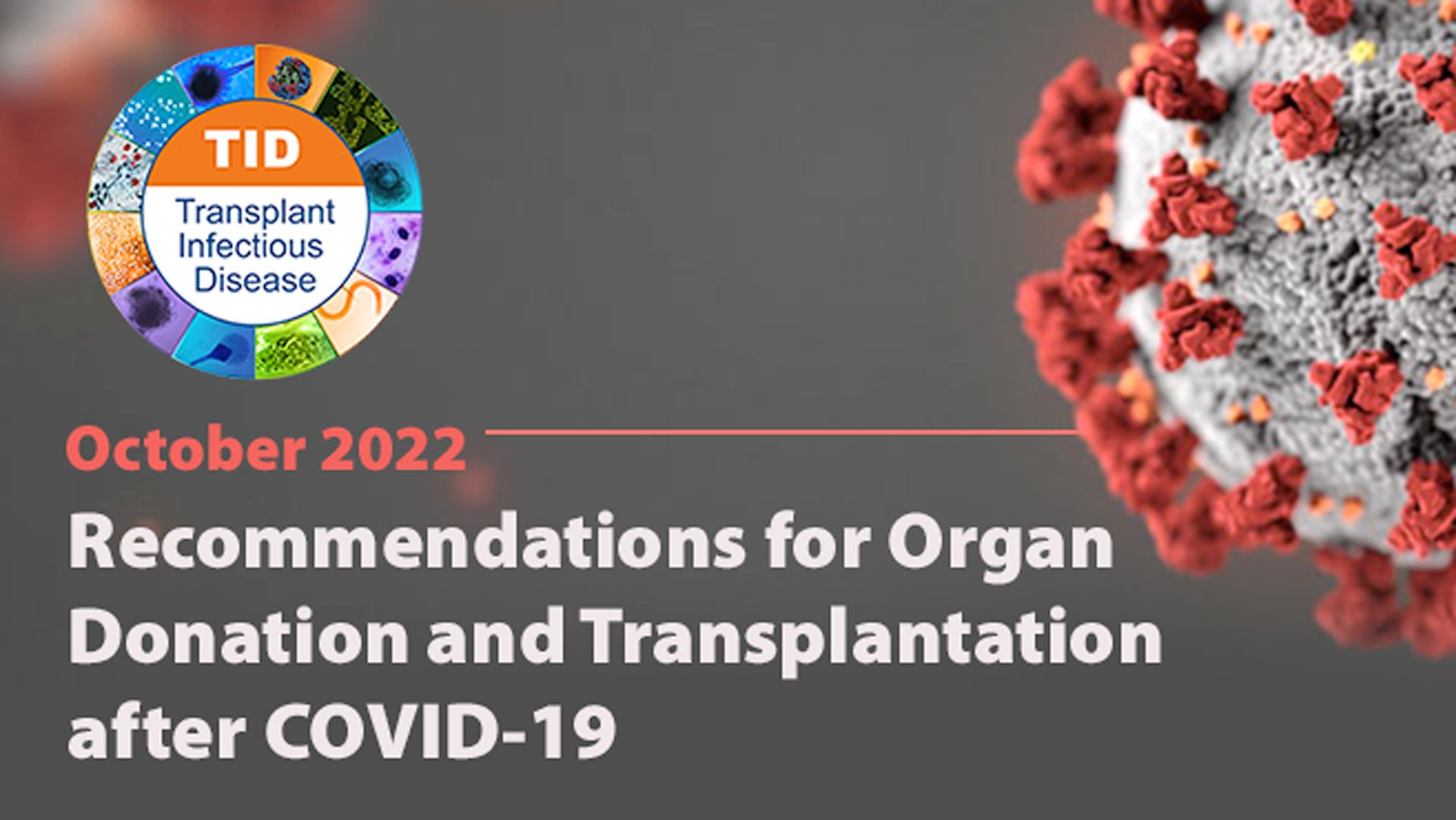Welcome to the
Cell Transplant and Regenerative Medicine Society
Thank you for attending!
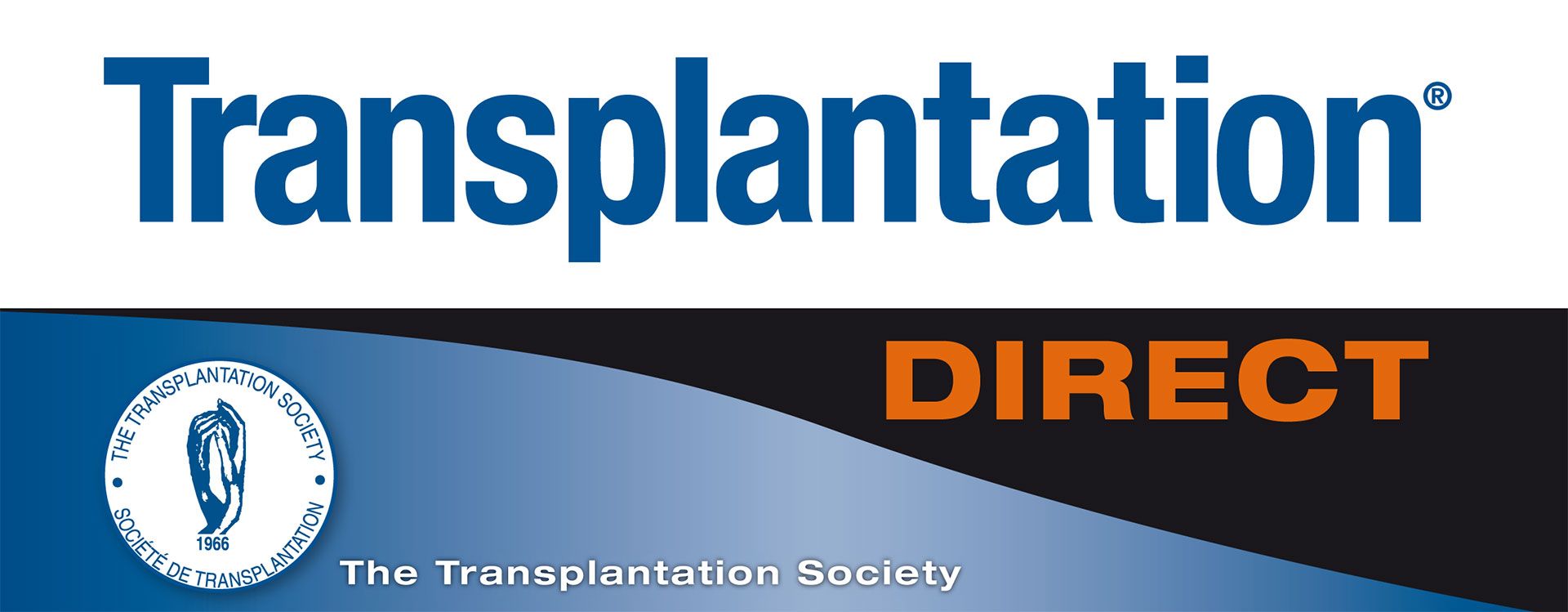
Official Journal of the Cell Transplant and Regenerative Medicine Society
Join us on our social media platforms
Upcoming Webinar Presentation
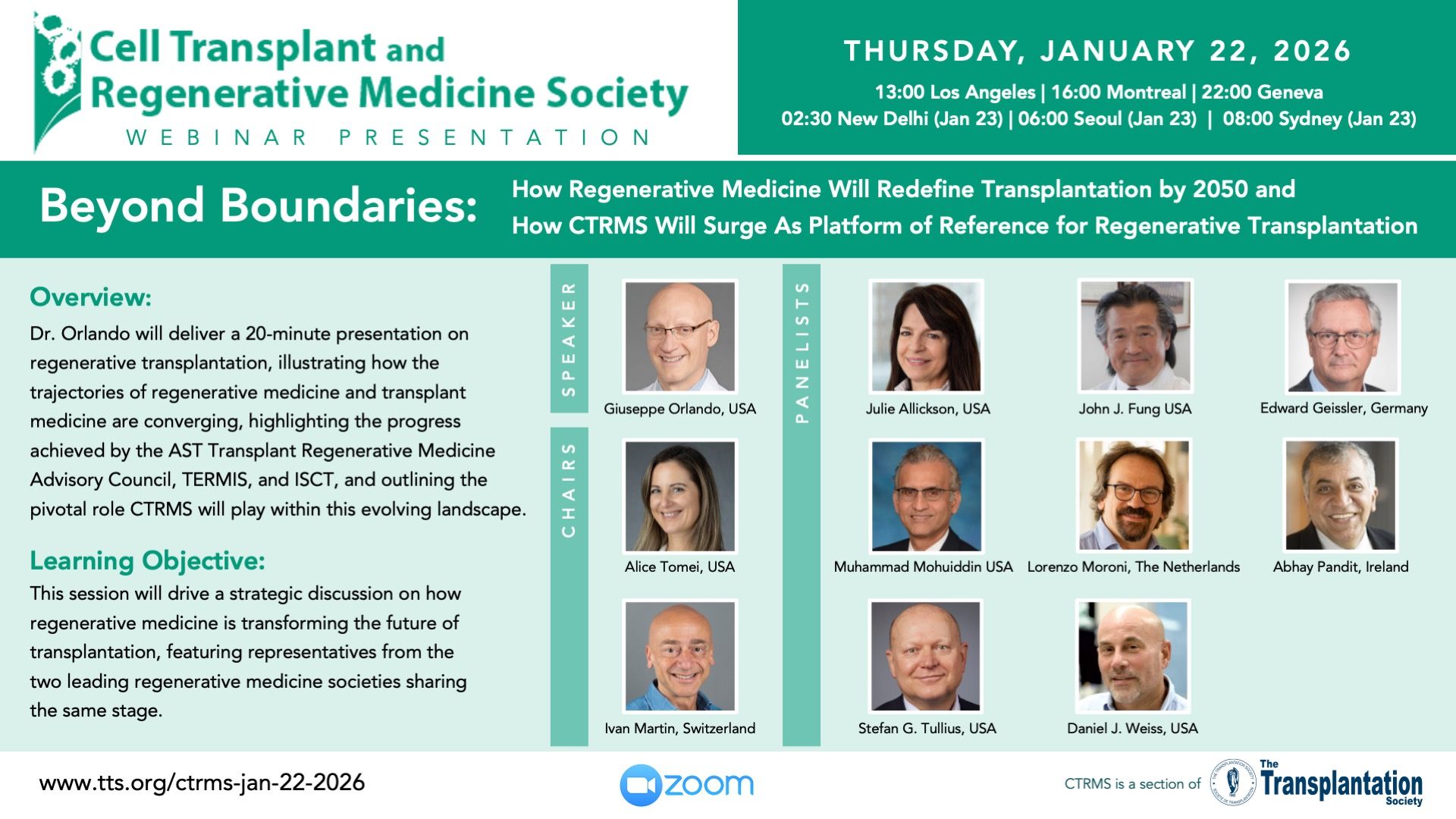
A Message from the President - December 2025

Esteemed Colleagues, Dear Friends,
It is with great honor and a profound sense of responsibility that I assume the role of President of the Cell Transplant and Regenerative Medicine Society (CTRMS). I am deeply grateful for the confidence you have placed in me and for the opportunity to serve this distinguished community of scientists, clinicians, and innovators.
I would like to express our deepest gratitude to the councilors who have served CTRMS in the past and have rotated out in Tokyo, and the appreciation for the many people who made the 2025 Congress in Tokyo such a great success.
CTRMS occupies a unique position at the intersection of transplantation and regenerative medicine. Though distinct, these disciplines share a common lineage in Alexis Carrel and a unified purpose: advancing therapies that restore function and transform patient outcomes. Over the past several years, we have observed both extraordinary progress and persistent gaps in collaboration between these fields. Our foremost objective during this presidency is to strengthen these connections, fostering an integrated approach that accelerates scientific discovery and clinical translation.
CTRMS will focus on the following priorities:
- Enhancing Interdisciplinary Collaboration
Establish structured opportunities for dialogue and joint projects between transplantation and regenerative medicine communities. - Strengthening Global Partnerships
Engage with international societies and institutions to broaden CTRMS’s reach and impact. - Expanding Educational Initiatives
Develop advanced training programs and workshops to equip members with cutting-edge knowledge and skills. - Fostering Member Engagement
Create platforms for active participation in committees, working groups, and strategic planning. - Advocacy and Policy Development
Position CTRMS as a voice in shaping regulatory frameworks and ethical standards for cell-based and regenerative therapies. - Equity and Access
Promote initiatives that ensure global access to advanced therapies, addressing disparities in healthcare delivery.
We will achieve this vision through:
- Dedicated Task Forces and Committees
We will establish specialized groups to lead initiatives in education, research, and policy. - Collaborative Platforms
Launch virtual forums and working groups to connect experts across disciplines and geographies. - Educational Programs
Develop webinars, workshops, and possibly fellowship opportunities to disseminate best practices and emerging science. As you know, CTRMS already offers quarterly webinars on the TTS platform, however we will secure a strategic partnership with the American Society of Transplantation (AST), the Tissue Engineering and Regenerative Medicine International Society (TERMIS) and the International Society for Cell and Gene Therapy (ISCT) to cosponsor the AST-TERMIS-ISCT webinar series. The webinar series, convening leading experts in the fields of cell, tissue, and organ transplantation as well as regenerative medicine, was inaugurated in 2021. Organized on a bimonthly basis through the TERMIS platform, the series attained its twenty-fourth installment in November 2025. - Strategic Partnerships
Formalize collaborations with leading institutions, societies, and industry partners to amplify impact. - Endorsement Program
Our society is committed to amplifying initiatives that align with our mission and strategic priorities. We aim to support members in leadership roles by formally endorsing institutional programs that reflect CTRMS’s vision and values. If you hold a leadership position at your institution, we warmly invite you to request endorsement for your programs, initiatives, or collaborative projects. To explore endorsement opportunities, please contact us at giuseppe.orlando@wfusm.edu - Global Outreach
Expand CTRMS’s presence and membership through the globe.
I therefore invite you to take an active part in shaping the future of CTRMS. Here are immediate steps you can take:
- Join or Propose a Committee or Working Group
Visit CTRMS to express your interest and contribute to strategic initiatives. - Share Your Ideas
Email us at giuseppe.orlando@wfusm.edu with proposals for educational programs, collaborative projects, or policy development.
I am pleased to announce that planning for the 2027 CTRMS Congress is underway. This landmark event will be hosted at a venue emblematic of our commitment to excellence and global impact. More to come.
Together, we can ensure that CTRMS remains at the forefront of innovation and continues to deliver transformative solutions for patients worldwide.
Thank you for your dedication and support. I look forward to working with each of you in advancing the mission of CTRMS.
With highest regards,
Giuseppe Orlando, MD, PhD, Marie Curie Fellow
President, CTRMS
Recent Award Winners
Past Webinars and Recordings
Contact
Address
Cell Transplant and Regenerative Medicine Society
c/o The Transplantation Society
740 Notre-Dame Ouest
Suite 1245
Montréal, QC, H3C 3X6
Canada






